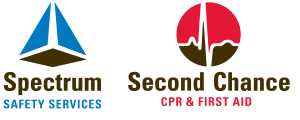 Touchback Safety Inc.
Touchback Safety Inc.  In Person
In Person  6.5 hours
6.5 hours
Length of Course: 7 hours
Practical portion of this course is completed on a Boom lift (Group B – Type 3).
**IMPORTANT PREREQUISITE** Must have an ESC Fall Protection Certificate to register for this course. BTATS or any other certificate will not be accepted. If you register without the proper Fall Protection certificate, you will not be able to attend the course and the fee will not be refunded.
Certification
- Touchback Safety Inc.
- Valid 3 years
- Complies with Industry and Workplace Health and Safety Standards
As the operator of a mobile elevating work platform (MEWP), you have sole responsibility for carrying out tasks safely and efficiently. Establishing good habits and maintaining a consistent, focused approach to safe operations of the MEWP are critical. Through a combination of theory and practical application, this course provides basic operator training for working with Type 3, Group B MEWPs with a focus on managing hazards and selecting, inspecting, and operating a MEWP.
While this basic course can be used as part of a worker’s competency assessment, the employer must designate a worker as a “competent person” based on specific tasks assigned.
Upon successful completion of the course and examination with a minimum score of 70%, you will receive a Certificate of Completion that is valid for three years.
Topics Covered:
- Operator Responsibilities
- Managing Hazards
- Rescue Planning
- MEWP Capabilities
- MEWP Selection
- Pre-Use Inspections
- Operation and Stowing
- No Upcoming Events
Learn more about how you can advance your career with our certifications
Fill our the contact form and our education specialists will get back to you within 1-2 business days.
Or check our Frequently Asked Questions here.
[gravityform id="4" title="true"]
